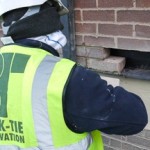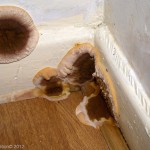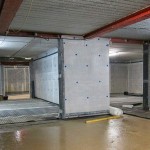Rainwater pouring into a 1970’s apartment in Leeds…. I thought I’d just post a quick one about the use of these handy modular trays. I specified them on a site in Leeds, where tenants of a block of apartments had real problems with rainwater penetrating over window and door heads. The problem was inherent […]
Chemical Damp proofing reliability (how DryZone changed the rules)
Warning this post is a bit long (but worth it) . What does chemical DPC injection entail? Well, it’s very simple; masonry is porous and most of it readily absorbs water. There is a tendency for any wall to ‘wick-up’ water from the ground it is built into. We’ve all seen the effects.; Rising Damp. […]
Cavity Drain Membranes rule right?
On balance I’d agree that the growth of cavity drain membrane has certainly reduced the demand for Type A ‘tanked’ solutions on basement waterproofing. However, I’m seeing my purchasing of cementitious and bituminous materials growing steadily. Of course CDM’s offer a fast and reliable way of protecting below ground structures from ground water and I […]




